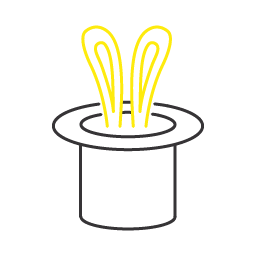Consumers are constantly changing the way they interact with brands and make purchasing decisions. This means marketing strategies have to evolve to keep up with these shifting consumer behaviours.
Taking a scattergun approach to marketing a business just won’t cut it. Some people might say “just get your message out there and analyse the response”. But this is not smart or sustainable. Would you jump on a boat with an idea of where you want to get to but no GPS or navigation equipment to help give you clear direction on how to get there? You’d be counting on hope and luck to get you to your destination. And the same applies to marketing; you need a map to get your business to where it needs to go, a map you can regularly revisit and evolve to get the business over those colossal waves and through rough weather conditions.
Putting a marketing plan down on paper can be overwhelming but can also be quite simple if you know what to include. I’ve seen many marketing plans over the years and you’d be surprised how often key elements are missing.
here’s 4 elements of a marketing strategy that I believe should absolutely be included
1. actually “knowing” your target market
Surprisingly many business owners [and sometimes even marketers], forget to detail their target market beyond the conventional demographics like age, gender and where they live. To really know your customer is to know them on a more granular level. Adopting a general ‘one size fits all’ approach to support lead generation won’t help meet your business goals because it’s not focused enough.
So how do you get to know your target audience better? Simple. Just ask! Speak to your current [and ideal] customers and determine what they want, what their challenges are, what they need, and what their motivations are. Include these details in the target market section of your marketing plan and keep revisiting and refining as you continue to learn more about your audience.
2. a well-crafted positioning statement
Often overlooked in a marketing plan is a good positioning statement. There are many views on what a positioning statement should be. But in its simplest form, it’s a statement that talks to the differentiation of your brand from that of your competitors in a simple and easy to understand way. It expresses how your product and/or service fills a customers’ need in a unique way that your competitors’ products, services and brand do not.
A positioning statement should not be confused with your tag line. A tagline is more an external statement to market, whereas your brand positioning statement fuels your messaging to consumers.
3. goals. yes, goals!
All too often we see businesses throwing money at random marketing tactics with no defined goals in place. Sure, the overall goal is to bring in new business and increase revenue, but think about how you get there exactly? What are those smaller steps you need to take to ensure you’re on track to achieve the overall goal?
Establishing SMART marketing goals to support the overall business goal is a great place to start. By writing down your SMART goals outline and continually revisiting them, you have a greater chance of making them a reality.
For example, if your overall goal is to increase your website conversion rate by a specific growth percentage, then one of your SMART goals to support this may be something like “Increase website visits by 50% [from 2.5k per month to 5k per month] by 30 June 2024”.
4. distribution
More commonly known as ‘Place’ in the classic ‘4 P’s of Marketing’, distribution is a key component in your entire marketing strategy. Today there are literally hundreds of distribution channels, however you need to determine the very best location or place for your prospective customer to receive essential information on your product or service in order for them to make their purchase decision.
Selecting only the key distribution channels or ‘places’ relevant to your target market will give you a more strategic approach with a purpose. Also, refining or changing your distribution methods over time could result in a significant increase in sales.
Simply start by documenting what your distribution channels are – this may consist of digital marketing channels like blogs, social media platforms or Google Ads, or other more traditional marketing channels like printed ads or flyers. You may even want to go deeper into the marketing funnel and look at a stronger sales intensive focus. Once the channels are documented you can then start mapping them out to align with the customer journey [e.g. blogs, social media and printed flyers for attraction tactics, website and sales for more conversion-focussed tactics].
One final word of advice for the distribution component of your marketing plan: Don’t try mimicking what larger businesses are doing in their distribution strategies. Your goals as a small to medium size business are different, and budgets likely to be a lot smaller. larger businesses who may have $1 million in their marketing budget allowing them to have a more consistent [and aggressive] distribution strategy across multiple touchpoints over a longer time period using mass media.
Small to medium size businesses must be thinking outside the box and focussing on strategies that keep within a lean budget and help them achieve their business goals.
conclusion
The process of crafting your marketing plan shouldn’t be rushed, but also shouldn’t drag on and then be forgotten about! Take some time to reflect on these elements of your plan, paying close attention to each of them. It doesn’t need to be page after page of endless marketing fluff, keep it to one or 2 pages detailing the key elements that will align with your brand and business goals.
we’re here to help!
Looking to create your next marketing strategy that will help you take over the world, or looking to tweak your existing marketing plan? Get in touch with our marketing team at marketing@businessdepot.com.au or give us a buzz on 1300BDEPOT!
get more marketing insights!
If you found these tips useful and you’d like to get more information on all things marketing, you can sign up to our mailing box here!




















































